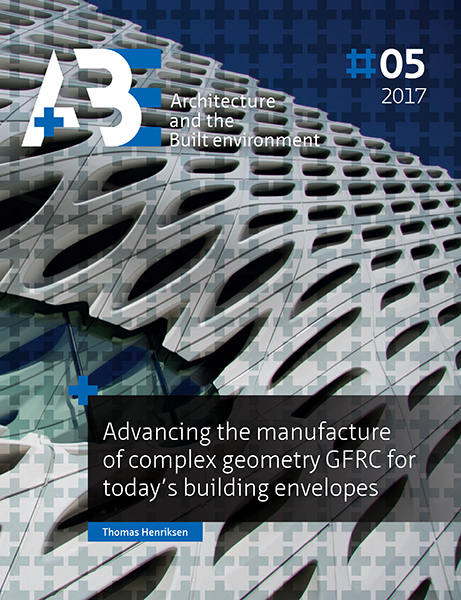Key problems associated with complex geometry GFRC
DOI:
https://doi.org/10.7480/abe.2017.5.3640Keywords:
GFRC, GRC, Complex geometry, bespoke, edge-returns, flexible moulds, thin-walledAbstract
Glass fibre reinforced concrete (GFRC) elements have become a sought after cladding material since their introduction as rain screen cladding for buildings. To advance GFRC for a range of complex geometry building envelopes this also requires advances in existing moulding techniques for thin-walled GFRC elements. To do so it is necessary to define the current state of thin-walled GFRC elements and the constraints and limits placed on them by existing production techniques. This paper identifies the current architectural and aesthetic requirements of thin-walled GFRC elements and maps their range of complexity, from 1-D to 3-D, to the limits of the most appropriate production method. This will inform guidelines for the future design development of thin-walled GFRC and enable an innovative approach to further advance the moulding techniques for thin-walled GFRC elements for a variety of complex geometry building envelopes. The paper concludes on which further steps need to be taken to advance thin-walled glass fibre reinforced concrete for tomorrow’s architectural buildings envelopes with complex geometries.

